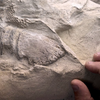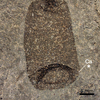Learn About The Newly Discovered Species of Early Humans!

A Denisovan Skull, thought to be a member of the newly categorized species
Post Author- Ellis Nolan
In studying early human ancestors, known as “hominids,” anthropologists have historically found much wider variations from specimen to specimen than expected, particularly among other paleontological fields. A recent study argues that certain groups of hominid fossils previously thought to be an already discovered species constitute a new one entirely.
Homo juluensis, as the species is known, have characteristically large heads compared to other hominids and lived in what is now Eastern China from about 300,000 years ago to about 50,000 years ago. They likely fashioned stone tools and hunted local animals for hides and food.
According to the researchers, in the 1800s, during the early stages of paleoanthropology, a variety of factors led to overcategorizing, or, multiple new species being created for specimens that shared numerous defining characteristics. In the 1920s and 1950s, however, the consensus was to err much more towards under-categorizing, to the extent that any hominid discovered from the time period of Juluensis was either categorized as Homo erectus, which lived from about 2 million to 100,000 years ago, or a contemporary Homo sapiens. The authors note that despite this background, they still didn’t expect to classify a whole new species of hominid.
The authors also believe one particularly confounding group of hominids could be a part of this newly classified species. Known as the Denisovans, they were first discovered in their namesake, Denisova, Siberia in 2010, when scientists analyzed the DNA of a fingertip specimen. Since then, few other fossil discoveries have been made, although some scientists believe the “Dragon Man” skull found in China in 2018 may belong to the group.
While naming a new species of hominid doesn’t remove all ambiguity from studying early humans, the researchers are hopeful it will aid categorization, particularly for many of the somewhat ambiguous fossils of Eastern China.
Want to learn more about hominids? Check out our Early Humans collection here!
Featured Product
Joe Frazier Boxing Glove
Cool Things!

Is “Paul is Dead” Dead?: Unpacking One Of Pop Culture’s Most Enduring Conspiracy Theories

Scientists Discover Hooves and Skin in Preserved Dinosaur "Mummies!"
A dinosaur discovery just in time for Halloween! In a new analysis of a group of fossils from Wyoming, Scientists have determined this group of fossils are dinosaur “mummies,” with preserved skin and even hooves.

Scientists Record a Bat Catching Birds Mid-Flight!
Bats, birds, screeches, oh my! In a reverse-Hitchcock twist, a new study reveals that a species of European bat catches and eats birds mid-flight.
Specimen Deep Dives

The House that Ruth Built: The Story of the Old Yankee Stadium

The Queen of the Skies: the Story of the Boeing 747

Old Ironsides: The USS Constitution and the Start of the U.S. Navy
Long Form Articles

The Artist Behind the Macintosh: Susan Kare and Apple Computers
While the two Steves, Jobs and Wozniak, are the most well known faces behind Apple computers, equally important to the products and culture of the company were those who crafted the experience of using their computers through design. The most notable of these visual architects was Susan Kare, a designer responsible for “humanizing” Macintosh computers.

Can I Lick It? Yes You Can!
Have you ever been unable to tell if a fossil was really a fossil, but you were too embarrassed to admit it? Have you ever wanted to lick a fossil just because, but you didn’t want to risk judgment from your peers? Well, good news! You can kill two birds with one stone! Licking a fossil can actually help you determine if it’s the real deal or just another rock.

Is It Legal To Own a Meteorite: How to Start Your Outer Space Collection!
Meteorites are some of the rarest geological specimens to be found on Earth. Of course, since these stones are not of our world, purchasing them can sometimes be a confusing process. Is it legal to own a meteorite? In short, yes! Read on for help starting your cosmic collection!


















